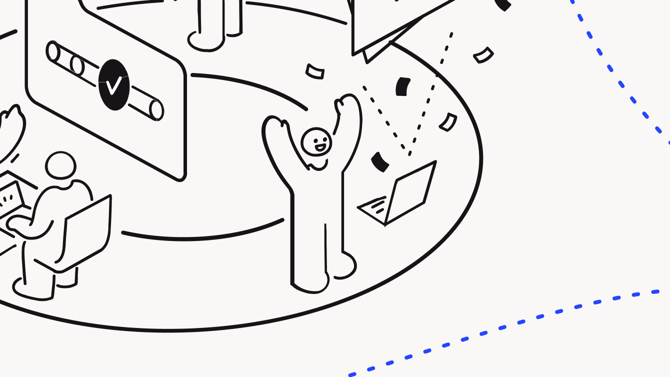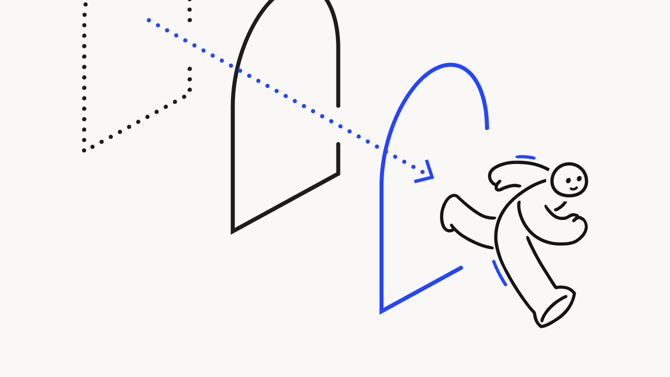It’s not easy to find the right executives for your company.
Hiring of any kind is an expensive, lengthy, and frankly exhausting endeavour. But sometimes it seems like the higher up the position you’re hiring for, the higher your experience will fall on the difficulty ladder. When you hire a company executive, you’re looking for somebody who not only has the right skills and experience but who can make a lasting impression on the company for (hopefully) years to come.
Exclusive online summit
·
May 23 2024
Moments that matter: how to seed great work
What's in this article
When you find your superstar executive, you’re going to want to hold on to them for dear life. The best way to start them off on the right foot is to offer a remarkable onboarding experience. Read on to learn more about how to onboard an executive with ease (psst: you can even find an executive onboarding template at the bottom of this article).
Why a proper new executive onboarding is important
When an executive joins the company, they’re coming with a significant amount of industry experience and their own thoughts and beliefs on the best way to run a company.
Of course, this could be said of any employee at any level. But an executive role comes with a certain expectation of leadership that can be hard to accomplish without a proper onboarding.
This difference can lead some employers to gloss over the onboarding process for executives or skip over it completely. Their reasoning could be something like:
- “It’s insulting to teach someone at the executive level something they probably already know”
- “We have a lot of work to do and no time to waste on training or onboarding”
- “An executive’s time is expensive and onboarding is not a good way to spend it”
- “The idea of onboarding somebody at the executive level seems overwhelming—we wouldn’t even know where to begin”
Of course, these assumptions are false, and can harm both employee experiences and business operations. Remember that a good onboarding experience was found to improve employee retention by up to 82%.
The other benefits of onboarding at the executive level include:
- Increasing trust and a sense of community between the executive level and other positions
- Open the floor for feedback (in both directions)
- Set expectations (for both the executive and the team)
- Give some time for the executive to ease into the company culture and current challenges the company is facing
Business studies have shown that the need for onboarding is not eliminated when somebody is at the executive level. If anything, it is intensified, since it is integral that an executive be fully aligned with the overall company culture.
A proper onboarding isn’t an experience that only a certain type of employee needs. It’s an employee that all human beings starting a new job needs.
What to include in an executive onboarding
Preboarding
If you think that employee onboarding starts on their hire date, think again! The preboarding stage, which takes place in the few weeks leading up to a new hire’s start date, is just as important—if not more.
If done well, it beautifully sets the tone for a successful career at your organization. If done poorly, it has the power to leave your new hire wondering if they made the right decision by accepting their new role.
You can make a great preboarding experience for your executives by:
- Setting up their computer and work station: you don’t want to be scrambling on your new hire’s first day. Set their work computer up for them ahead of time (and send it in the mail if they’re working remotely)
- Sending a welcome package: this sets a good tone at any level of employment, but when it comes to executives, it’s a necessity. Some great welcome gifts for executives include personalized AirPods, local gourmet baked goods, macarons, plants….the list could go on and on!
- Setting up accounts and permissions: if somebody is working at the executive level, they’re going to need access to many different tools. Have your IT set these up ahead of time.
- Sending out an announcement: by letting your employees know about a new executive, you’ll take a bit of pressure off. Fewer people will be wondering who the new face is when they see them walking around or on Zoom.
- Getting organized: make sure that you have all of your proverbial ducks in a row before your executive’s first day. This includes booking the right people for meetings, organizing all of your training resources, and having the right paperwork in order. It’s important for all new employees but especially important for executives.
Onboarding
Fun fact—the onboarding period lasts longer than most people think it does. The executive onboarding process in particular is more intense than other onboarding set-ups. It definitely won’t be done in a day. In fact, it’s important for the onboarding period to last for months. Why? There’s a lot of people to meet, teams to understand, scopes to…scope out, and priorities to identify.
Here are some things you can expect to go over during your executive’s first week of onboarding:
- CEO meet-and-greet: many executives work very closely with the company’s CEO, so it’s a good idea to schedule a meet-and-greet within the onboarding (grabbing lunch or dinner is a great option)
- Founders meet-and-greet: if your company’s founders are still involved with the company, it’s a good idea to have them meet with your new executive
- Learn about company history and business ambitions: make sure to include things like the story of your company’s founder, important moments in your company’s history
- Financial information: executives should be made aware of the financial workings of your company so that they can make informed decisions
- Executive-specific tools and dashboards: in order to do their job, your new executive are going to need the same birds-eye view of company activities that other senior-level positions in your company need
Training
Training isn’t just for entry-level positions. Executive training includes things like:
- Hands-on tech training: some of the tech that your company uses is probably new to your executive, so expect to spend time and energy training them on it
- Product training: it’s important that executives understand your product in and out, so make sure you schedule demonstrations and stakeholder interviews
What does a great executive onboarding process look like?
Maybe the executive onboarding checklist above makes sense on the surface, but you’re having trouble visualizing it. Here are some great onboarding executive examples. If you see any of them in your onboarding process, then chances are that you’re doing a great job!
- Honest feedback: telling each other the honest truth can be very hard, even in a professional context. But with executives, it’s of the utmost importance. Make sure that you set parameters that allow for honest feedback sessions. It works best if you schedule precise time for them as part of your onboarding.
- Time for fun: the onboarding period can be emotionally exhausting for newcomers and onboarders alike. Don’t forget to schedule some time for all parties to let loose! It’s recommended that you set aside some time for a dinner or happy hour for your executive that’s outside of working hours.
- Give your executive a chance to lead: yes, your executive is a newcomer, but it’s important that they also get the sense that you trust them early on. You can send this message by letting your new executive lead an all-hands within a few weeks of being hired.
- Show vulnerabilities: you want your executive to know that they’ve stumbled upon something great, but you shouldn’t be afraid to let your guard down as a company. Let them in on what keeps you up at night as a company. If they don’t know, they can’t help.
- Be open-minded: you hired your new executive so you can have a new point of view, so make sure to be open to their suggestions and overall opinions related to your onboarding process.
Onboarding an executive takes work but is worth it. Try out our executive onboarding template and see the difference an intentional approach to onboarding makes.



